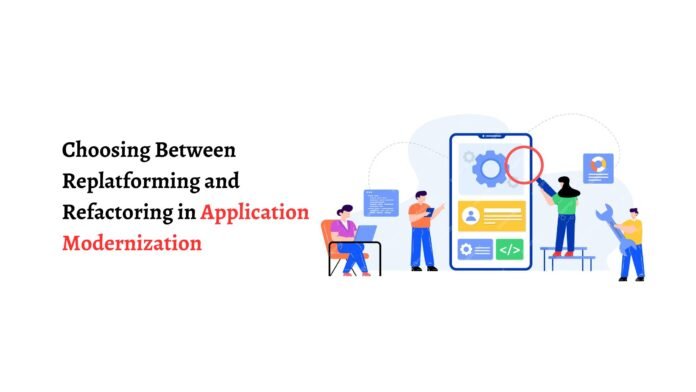Software never truly ends until it is ultimately outdated. Updates, changes, and new features are continually being pushed that make tools and applications more secure, more effective, or even operate differently, as anybody who has ever had to reboot their computer to update Windows knows very well. These have become significantly more prevalent due to shifts to the cloud, particularly with the acceleration of the digital transformation. Refactoring and re-platforming are the two most popular methods for cloud migrations among developers. As these are complex processes, businesses are looking for experts offering app modernization services that can help them implement the right approach. This blog will give you an idea about re-platforming and refactoring in application modernization.
Factors Leading to Cloud Migration
1. Highly Flexible
Cloud computing provides an unmatched level of flexibility. Because it lets you adjust resources to suit your needs, it’s the best option for companies whose workloads change frequently. Rapid scalability can be a game-changer in today’s volatile business environment, which is why adaptability is exceptionally vital.
2. More Secure
Cloud service providers make significant security investments—often more than a single company can afford. Businesses and their clients can rest easy knowing that their data and apps are safeguarded against various attacks thanks to this upgraded security infrastructure.
3. Improved Collaboration
Cloud-based technologies facilitate collaboration between teams, zones, and even continents. The cloud enables seamless collaboration and communication, enabling individuals to work together regardless of their physical location. Remote work has become the standard. Switching to the cloud has raised the demand for legacy application modernization services that can promote the overall growth of the business.
4. Faster Speed
Cloud systems are made to operate quickly, cut down on latency, and improve user experience. For contemporary applications that require responsiveness and dependability, this speed is essential.
Replatforming Vs Refactoring
Now that we’ve covered the reasons for moving to the cloud let’s look at the two basic application modernization methods: re-platforming and refactoring.
Replatforming
An application gets replatformed when transferred from its current cloud-based platform to a new one. Stated differently, re-platforming is the process of moving a program with minimal modifications to its codebase to a new platform that is designed for cloud computing.
For businesses looking to profit from cloud computing without having to rewrite or restructure their programs, replatforming is frequently a smart solution.
The program’s code is usually optimized for the new cloud platform throughout the re-platforming process, but significant alterations to the application’s functionality or architecture are avoided.
Refactoring
Refactoring enhances and optimizes an application’s design prior to cloud migration. This guarantees that the application can fully utilize cloud computing’s scalability, dependability, and affordability.
Developers examine the coding and architecture of the program, pinpoint areas for improvement, and apply modifications to make the application more cloud-friendly during the refactoring process.
For instance, they might divide large, monolithic programs into more manageable, separate components that scale more readily. Refactor migrations are generally less complicated, and these code modifications are more restricted.
What to choose in Application Modernization?
The decision between re-platforming and refactoring is primarily based on the objectives of your company, available resources, and the particular requirements of your applications. To assist you in making an informed choice, take into account the following:
1. Assess Your Objectives
Ascertain whether achieving better performance and future-proofing (refactoring) or cutting costs and time-to-market (re-platforming) is your main objective.
2. Evaluate Existing Code
Replatforming may be a viable solution if your existing codebase is well-structured and free of technical debt. However, if it is obsolete, inefficient, or rigid, reworking may be a better option.
3. Resource Availability
Think about the resources you have at your disposal, such as money, time, and qualified staff. Replatforming is less disruptive and may be done with fewer resources than refactoring, which requires more resources.
4. Long Term Vision
Consider your long-term business plan. Organizations seeking to stay ahead of the curve and adjust to changing technological trends would benefit more from refactoring.
Conclusion
Whatever migration process is chosen, you need to be fully aware of the benefits and drawbacks of each. Either option might be a better fit to achieve business objectives, depending on the condition of the current platform. App modernization services become essential when you are planning to modernize your legacy system or want to switch to the cloud, as the experts can help you decide the right approach for your business.





